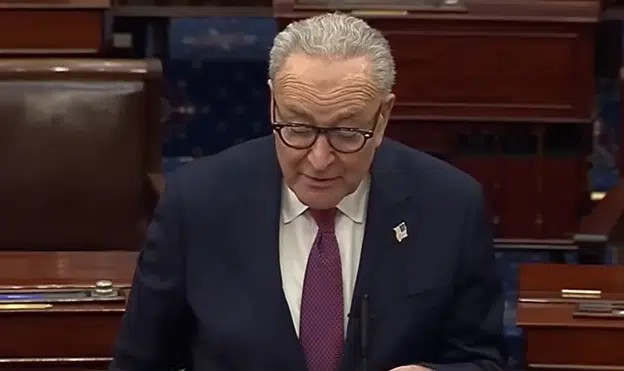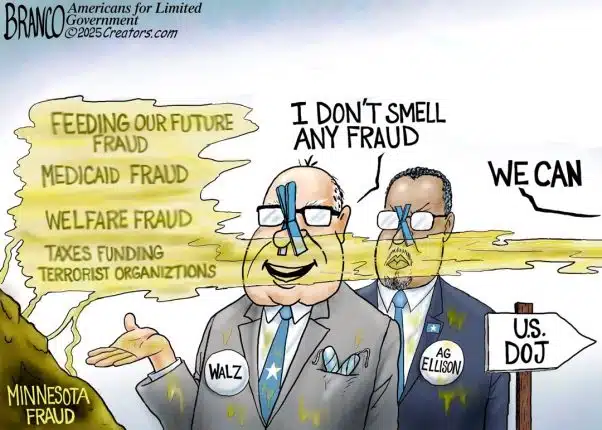
Ten months into his second term, President Donald Trump’s approval rating sits at just 43 percent in the latest Real Clear Polling average, nearly as low as Joe Biden’s was in November 2021. At the same time, Democrats have eked out one of their widest leads in the generic Congressional ballot all year, leading Republicans by 4.3 percentage points.
While the past month has been tumultuous, with Republicans and President Trump largely being blamed for the unpopular government shutdown and Democrats sweeping the Virginia and New Jersey governor races, there are more persistent trends at play.
The perception among voters that the cost of living remains high even as inflation continues cooling from its peak in 2022, as well as concerns about the housing affordability crisis, jobs, and healthcare are driving deep dissatisfaction with both parties. This dissatisfaction is especially prevalent among swing voters — notably Hispanics, young people, independents and middle-income earners — those who had just moved to the right in favor of President Donald Trump in 2024.
The issue for Republicans is that these are the voter groups conservatives worked hard to build inroads with over the past decade, and current polling shows wide dissatisfaction with both parties.
President Trump made history by winning the popular vote for the first time for a Republican candidate in two decades with a broad coalition of voters in 2024. He made history with young, middle-class, Hispanic, and independent voters with his populist America First message. However, one year into his second term President Trump’s support is wavering among each of these groups. To maintain swing voters under the conservative umbrella, Republicans will need to walk a delicate balance. While the economy is still recovering from the Biden years, voters say inflation is high and are concerned about wages keeping up with prices.
Making historic inroads with Hispanics was a key component of President Trump’s 2024 victory, with President Trump losing the Hispanic vote by only five points, 46 percent to 51 percent, according the 2024 CNN Exit Poll. This was a large shift from 2020, when he lost Hispanics by 33 points.
However, Trump’s approval rating is suffering with Hispanics today. In the latest Economist/YouGov survey he is underwater by 16 points with Hispanics, with 40 percent of Hispanics approving of the job he is doing as president while 56 percent disapprove.
According to the survey, inflation at 24 percent continues its trend since 2022 as the number one issue to voters across fifteen domestic and global issues, and prices are disproportionately important to Hispanics. 33 percent of Hispanics, compared to 21 percent of Black voters and 28 percent of Whites say inflation is their number one issue.
Republicans are also at risk of losing ground with Hispanics in the midterms according to the latest generic congressional ballot data. Republicans won 39 percent of Hispanics in the midterm election cycle under Joe Biden, while Democrats won 60 percent. In the latest generic congressional ballot survey from the Economist/YouGov, support for both Democrats and Republicans is in jeopardy. Just 50 percent of Hispanics plan to support Democrats in the midterm cycle, a 10-point decline compared to 2022, and just 28 percent plan to support Republicans, an eleven-point decline.
President Trump’s approval rating among young Americans is also in jeopardy, after he made significant progress with Gen Z and Millennials in 2024 with his populist, America First message. While Trump still lost the 18–29-year-old cohort in 2024, he lost them by only nineteen points to Kamala Harris. This was a massive step forward with young voters compared to 2020, when Trump lost young people by 26 points, and 2016, when he lost them by 30 points. President Trump is currently underwater among voters under 30 by an alarming 44-points, with 69 percent of young people disapproving of Trump’s job as president compared to 25 percent who approve.
The top two priorities for young people are inflation (19 percent) and jobs and the economy (17 percent) according to the Economist/YouGov data, as economic issues like grocery prices and the housing affordability crisis impact these numbers. Thirteen percent of young people also cite civil rights as a top concern, and eight percent cite healthcare, indicating room for conservatives to make their case on both issues.
As for the way young people are planning to vote in the midterm cycle, it isn’t looking great for Republicans, but Democrats’ numbers are also collapsing compared to past midterm cycles. Democrats lead Republicans in the generic congressional ballot among young people by 29 percentage points, 47 percent to just 18 percent. However, 33 percent of young people would not vote or are undecided.
Those numbers for young people show an absolute collapse in support for both parties compared to just three years ago. In 2022, during the covid pandemic, Democrats won under thirties by 28 points, 63 percent to 35 percent. Looking at the way young people are polling now, the spread between Democrats and Republicans hasn’t changed much. In 2022 Democrats won young people by 28 points, and Democrats are polling ahead of Republicans in the generic congressional ballot by 29 points now. However, what has collapsed is support for both parties. Only 18 percent of young people currently plan to support a Republican in the midterms, compared to 35 percent in 2022, a seventeen-point decline for Republicans. Looking at Democrats, less than half (47 percent) of young people plan to support a Democrat in the midterms, a sixteen-point decline. The fact that nearly a third of young people would not vote or are undecided leaves significant room for both parties to improve — or lose the youth vote entirely to third parties and primary challengers like Democratic socialists.
President Trump’s numbers with independents have also fallen significantly since he lost them by only three points in 2024, 46 percent to 49 percent. His approval rating is underwater by 35 points, with 63 percent of independents disapproving of his job as president and 28 percent approving — very similar to Biden in 2021.
Independents are also pulling away from both parties in the latest generic congressional ballot data, with 34 percent planning to support Democrats and nineteen percent planning to support Republicans in the midterms. The largest share of independents (44 percent) do not know yet or do not plan to vote. In 2022, Democrats narrowly won independents by two points, 49 percent to 47 percent. This indicates a steep fifteen-point decline in support for Democrats and an even steeper 28-point decline for Republicans. However, with a majority of independents not planning to vote (23 percent) or undecided (21 percent), the two-party system is in trouble. For independents, top concerns are inflation (25 percent), jobs (15 percent) and healthcare (10 percent), indicating independents are hungry for economic reform.
Another area of concern for President Trump is among the middle-class. President Trump is underwater with Americans earning between $50,000 and $100,000 annually by eighteen points, with 58 percent holding a negative view of him and 40 percent holding a positive view. President Trump is also underwater by fifteen points among those earning less than $50,0000 and seventeen points with those earning over $100,000.
The affordability crisis, including the inability of a wide swathe of Americans to afford a home in the current economic environment, combined with concerns about jobs and healthcare are making Americans increasingly unhappy with both political parties. Incumbents in both parties are vulnerable.
While Republicans in Congress and President Donald Trump are absorbing the brunt of this discontent, polling data reveals both parties are suffering substantially among swing voters, including independents, Hispanics, young people, and the middle-class. Swing voters that swung toward President Trump and conservatives in 2024 are now sitting on the fence, but Democrats have done little to recoup them, with many now vulnerable to primary challenges in 2026. Instead, both parties have suffered double-digit declines among swing voters compared to the 2022 midterm cycle. Conservatives looking to maintain the momentum President Trump and Republicans made in 2024 need to continue to focus on a strong economic populist message and address the affordability crisis head on while there’s still time.
Manzanita Miller is the senior political analyst at Americans for Limited Government Foundation.






